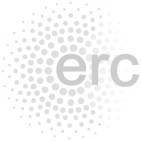The intricate and often aggressive world of cancer is driven by a multitude of cellular processes, with oxidative stress emerging as a critical player. This delicate imbalance, caused by an excess of reactive oxygen species (ROS), particularly free radicals, is implicated in everything from tumor initiation and growth to metastasis and treatment resistance. However, studying these fleeting and highly reactive molecules in the complex microenvironment of a living cancer cell has been a monumental challenge for researchers. Traditional methods often lack the necessary specificity and resolution, providing a limited and often static picture. Today, a groundbreaking technology is set to change that landscape entirely: quantum sensing.
At QT Sense, we are at the forefront of this revolution with our Quantum Nuova system. By harnessing the unique properties of fluorescent nanodiamonds (FNDs) with Nitrogen-Vacancy (NV) centers, we are providing researchers with an unprecedented ability to detect and measure free radicals in real-time, at the single-cell and even subcellular level. This is not just an incremental improvement; it is a paradigm shift in how we can study and understand cancer.

The Challenge: Seeing the Unseen in Cancer Biology
Free radicals, such as the superoxide radical (O2⋅−), are notoriously difficult to measure. Their high reactivity and short lifespan mean they exist in low concentrations, making them elusive targets for conventional detection methods like fluorescent dyes. Furthermore, these traditional techniques often suffer from a critical lack of specificity, lumping together all ROS and failing to distinguish the truly damaging free radicals from non-radical species like hydrogen peroxide (H2O2). This has significantly hampered our understanding of the precise role of free radical dynamics in cancer progression.
A crucial aspect of cancer is cell migration, the process by which cancer cells spread to other parts of the body. Pioneering research has begun to shed light on the connection between free radicals and this metastatic process. A study on migrating human breast cancer cells has demonstrated the power of FND-based quantum sensing to overcome previous limitations (van der Laan, 2020). By utilizing the principles of T1 relaxometry, researchers were able to achieve real-time measurements of free radical concentrations within these moving cells. This work, for the first time, offers a direct window into the oxidative stress landscape of metastasizing cancer cells, a critical step towards developing anti-metastatic therapies.
Quantum Nuova: A New Era of Precision in Cancer Research
The Quantum Nuova system, a specialized confocal microscope integrated with our Quantum Pulse Software, is the first and only platform to automate and refine this powerful quantum sensing technique for the research community. Its nanomolar sensitivity and subcellular resolution (down to approximately 300 nm) allow for the precise pinpointing of free radical activity within the cell. This capability is crucial, as the location of oxidative stress can be as important as its magnitude.
Before sensing can occur, the nanodiamonds must be efficiently delivered into the cancer cells. Research into the timing and mechanisms of nanodiamond uptake in colon cancer cells has provided vital insights (Sigaeva et al., 2019). Studies have shown that for notoriously difficult-to-transfect cell lines like HT-29, the method of delivery is key. By administering FNDs from the basolateral side of the cells, a remarkable 8-fold increase in uptake was observed. This foundational work ensures that our quantum sensors can be effectively deployed across a wide range of cancer models, including those previously considered challenging.
Beyond Detection: Combining Sensing with Therapeutic Intervention
The potential of quantum sensing in oncology extends far beyond fundamental research. It is poised to revolutionize drug development and the discovery of predictive biomarkers. The ability to monitor the direct effect of a drug on free radical production within a cancer cell offers an immediate and precise measure of its efficacy.
A groundbreaking study utilizing functionalized fluorescent nanodiamonds in HeLa cells has showcased a visionary approach: the combination of drug delivery and quantum sensing in a single, elegant system (Tian et al., 2022). In this research, FNDs were not only used to detect free radicals but also to deliver a cancer drug directly to the cells. This allowed for the real-time monitoring of the drug’s impact on local free radical concentrations, providing an unprecedented, localized view of the therapeutic response. This dual-functionality opens the door to screening vast drug libraries with unparalleled speed and accuracy, identifying novel anti-cancer compounds that specifically target oxidative stress pathways.
The Future of Cancer Research is Quantum
The convergence of quantum physics and cell biology, as embodied by the Quantum Nuova system, marks a pivotal moment in the fight against cancer. By providing a tool that can deliver robust, repeatable, and highly specific measurements of free radicals, we are empowering researchers to:
- Unravel the fundamental role of oxidative stress in tumor heterogeneity and progression.
- Develop novel diagnostics for early cancer detection and for monitoring treatment response, with potential applications in sepsis and infertility where oxidative stress is also a key factor.
- Accelerate drug discovery by directly observing the efficacy of novel therapeutics at the subcellular level.
- Discover new predictive biomarkers to personalize cancer treatment.
The insights gleaned from the foundational research highlighted here are just the beginning. The ability to measure the previously immeasurable, to see the intricate dance of free radicals within a single living cancer cell, is no longer the stuff of science fiction. It is a present-day reality, and it holds the key to the next generation of cancer breakthroughs. The quantum revolution in cancer research has arrived.
Sources:
- Sigaeva, A., Morita, A., Hemelaar, S. R., & Schirhagl, R. (2019). Nanodiamond uptake in colon cancer cells: the influence of direction and trypsin-EDTA treatment. Nanoscale, 11(37), 17357–17367. This paper corresponds to the user-provided link “Timing and Mechanisms of Nanodiamond Uptake in Colon Cancer Cells – PMC” and discusses methodologies for effective nanodiamond delivery into challenging cancer cell lines.
- Tian, Y., Wąs, M., Morita, A., Sigaeva, A., Gralińska, E., Orłowski, P., Naumov, P., & Schirhagl, R. (2022). Functionalized Fluorescent Nanodiamonds for Simultaneous Drug Delivery and Quantum Sensing in HeLa Cells. ACS Applied Materials & Interfaces, 14(34), 39265–39273. This is the direct source for the research on combining drug delivery and quantum sensing in HeLa cells.
- van der Laan, K. J. (2020). Diamond-based quantum sensing of free radicals in migrating human breast cancer cells [Doctoral dissertation, University of Groningen]. University of Groningen. This corresponds to the user-provided link regarding migrating breast cancer cells and serves as a key example of the technology’s application in fundamental cancer research. The specific reference points to Chapter 8 of the thesis.





